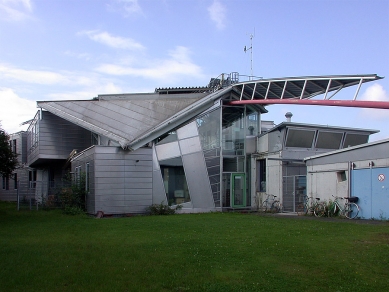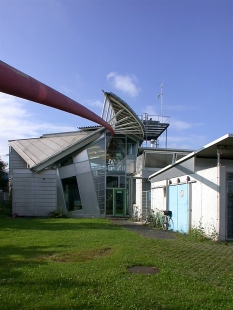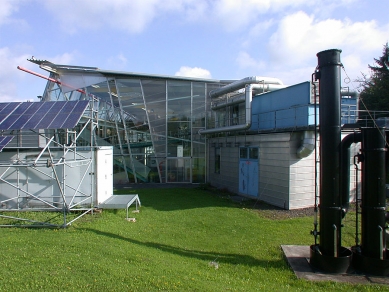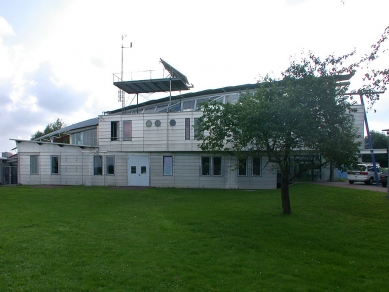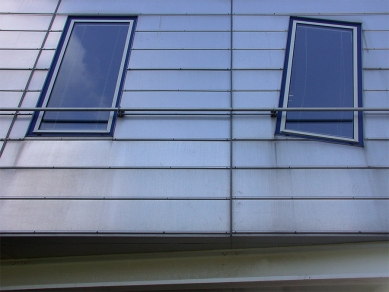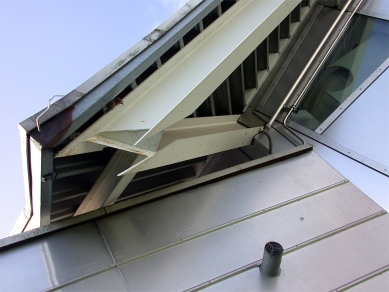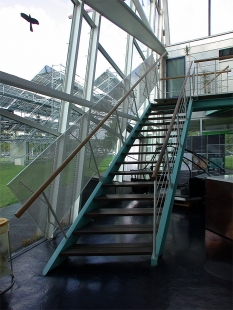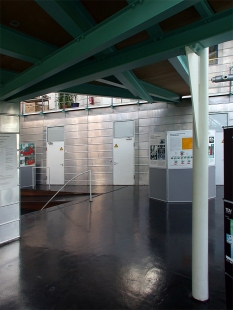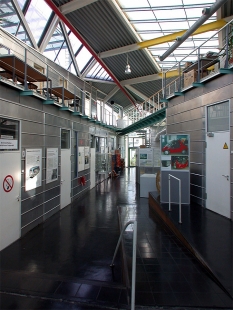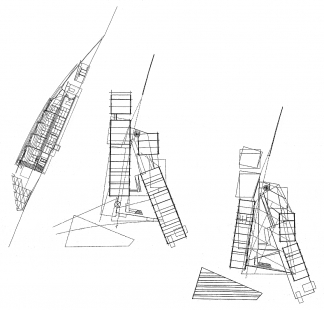
Hysolar research and institute building of the University of Stuttgart
Institute of the University of Stuttgart

A research institute concerned with solar energy, this building looks appropriately like a laboratory test-rig. It was completed quickly on a tight budget, so there were advantages in using factory-made containers for laboratory rooms. The two wings are used by different groups: the east by university faculties, the west by independent groups. Their oblique placing allows the glazed hall to open up towards main entrance and the sun, while the projecting west-wing room at the north end is isolated because its equipment produces hydrogen. To limit the effects of an explosion, this room has a light roof and walls which would blow out. Elements such as the sloping glazing mullions and twisted windows are not pragmatically justifiable, and the most extravagant formal gesture is a red steel tube which bursts from the ground north of the building, traverses the hall, and projects through the glazed south end. This is almost entirely rhetorical, for its only practical function is to support a short tail of roof. Most other institutes of this kind are lamentably dull, representing everything special about their function within a standard grid-planned box. This one is at least provocative and memorable, conveying the excitement of the frontier-pushing work which takes place within.
Peter Blundell Jones: Günter Behnisch, Birkhäuser 2000, p.106
1 comment
add comment
Subject
Author
Date
bezdomovci
petr
27.06.08 12:32
show all comments



